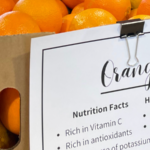
The heart is one of the most important organs in the human body. Yet while it single-handedly gives us life, it is the most common leading cause of death in the United States. Ana, a dietetics graduate student, will help you discover the risk factors and what can be done to prevent them.

Children who eat poorly are more likely to develop certain long-term health problems later down the road. Hear from our dietetics intern as she explains the importance of childhood nutrition and what Well Fed is doing to help!

Bad puns aside, when was the last time you thought about your kidneys? Unless you’re one of the 37 million people in the US with some form of chronic kidney disease, you probably haven’t given them much thought. Make two fists with your hands right now. Don’t worry if you’re in a public space, pretend […]










